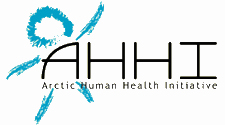Project Listing
Health Surveys
|
Title: Integration and health - a comparative study of how socio-demographic changes have influenced the health condition of the Sami and the Inuit since the 18th century |
Summary of Activity
The main objective of the project is to study the health trends in different Sami and Inuit populations and relate them to socio-demographic changes, and to develop a theoretical framework on the relations between the health condition of minority populations in the arctic region and the processes of assimilation, integration and segregation of these populations. The theoretical framework on how socio-cultural processes are related to health is incomplete. For indigenous populations in the arctic, Berry’s model of acculturation is often used as a basis when interactions between health and socio-cultural processes are discussed. However, the empirical support for the Berry-model is not very convincing, at least not for different Sami and Inuit populations. Thus, a modified model is needed to account for the diversity in health conditions observed among indigenous people in different socio-cultural and demographical conditions. In Sweden, the governmental Sami policy has until rather lately been aimed at separating the reindeer herding Sami and assimilating the non-herding Sami. In spite of other purposes, the separation of the reindeer herding Sami has promoted a better health within this group than among other Sami and non Sami in the same geographical setting. According to recent studies, prominent characteristics of the lifestyle of the reindeer herding Sami are e.g. abundance of physical activity and fresh air, a diet rich in high quality fat and proteins, and a stronger cultural identity. Yet, in a historical perspective the health and living conditions of the Sami are only partly known, and their health and diseases have never been comprehensively analysed in relation to socio-cultural and demographic changes. Compared with the Sami, the health and life conditions of the Inuit of Greenland and Denmark are relatively well studied, with data from extensive epidemiological studies based on clinical examinations, self-reported health, identity and lifestyle, allowing detailed knowledge on the epidemiological transition that has occurred among the Inuit. This transition started earlier among the Sami, but is probably still an active process both among the Sami and the Inuit. Comparisons of different groups of Sami and Inuit enable examination of the impact on the health transition of various phases of integration, assimilation and separation. The long history of collecting and maintaining national statistics in Sweden makes it possible to gain new information on the socio-demographical and health development of the Sami. By aid of the parish registers, changes in living conditions and health will be followed from the mid 18th century. A postal questionnaire will be sent to 10 000 Sami in different parts of Sweden. Similar questionnaire data is already available from Inuit in Greenland and Denmark. Health status and socio-demographic conditions will be described through indicators such as e.g. causes of death, infant mortality, life expectancy, occupation, housing, income, migration, kinship, and self-reported health. Different states of integration/assimilation will be defined based on attitudes and policy embraced by the majority population and on e.g. self-identity, self-image, kinship, sense of coherence, cultural heritage, participation in various societal activities, and copying strategies of the Sami and the Inuit.
Contact:
Prof Peter Sköld
Centre for Sami Research, CeSam,
Umeå University
SE-901 87
Sweden
Tel: +46 (0)90-786 50 00
Mobile: no
Fax: no
Email: peter.skold@cesam.umu.se
© 2006, Arctic Human Health Initiatives
All rights reserved.
